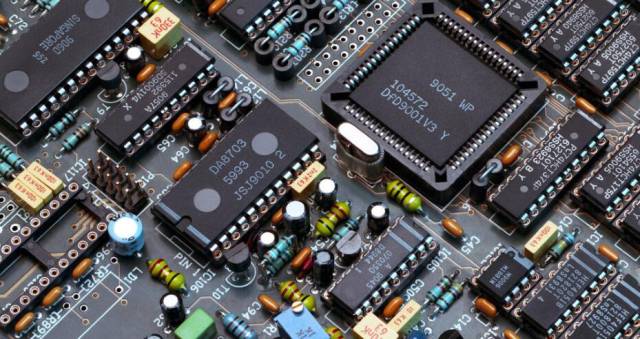What is Clock/Timing IC?
Introduction
In the digital age, Clock/Timing Integrated Circuits (Clock/Timing ICs) play an essential role; they are the heart that ensures the stable operation of electronic systems. These integrated circuits are not only responsible for generating and distributing clock signals but also managing these signals to ensure data synchronization and system performance optimization. Clock/Timing ICs typically include components such as Oscillators (OSC) and Phase-Locked Loops (PLL), where the oscillator is responsible for generating a stable frequency signal, and the PLL generates a stable high-frequency clock signal based on an external reference clock signal. Real-time clock (RTC) devices are key components in digital circuit design, with their coordinated work ensuring the timing stability and high performance of digital circuit design.

Functional Features
The main functions and features of Clock/Timing Integrated Circuits include stability, accuracy, programmability, low-power design, and multifunctionality. These features enable the clock chips to provide stable clock signals to meet various application requirements and have multiple clock output channels, providing multiple clock signals at the same time. Among them, the low-power design is an important aspect; the Clock Gating technology can set the input clock of the register to 0 when the input data of the register is invalid, thereby reducing power consumption. This is particularly important for the deep sub-nanometer process design in the mobile market, as low power consumption has become an increasingly important theme.
Application Fields
Clock/Timing Integrated Circuits are widely used in various fields such as industry, automotive, consumer electronics, telecommunications, and medical equipment. They play the role of synchronizing clock signals in these fields, which is crucial for maintaining the normal operation of electronic devices. Key technologies include clock distribution, clock generation, and timing analysis, ensuring the rigor of the design under different conditions and meeting the needs of various high-performance applications.
Technical Development Trends
With the development of integrated circuit technology, the development trends of Clock/Timing Integrated Circuits are reflected in aspects such as high integration, high accuracy and stability, multi-channel output, low-power design, and programmability. These trends make the clock chips more flexible to meet the needs of different systems.
● High Integration: Reduction in chip size and increase in integration.
● High Accuracy and Stability: Continuous improvement of the accuracy and stability of the clock signal.
● Multi-Channel Output: Adapting to the complex needs of multi-module systems.
● Low-Power Design: Adoption of advanced processes to further reduce energy consumption.
● Programmability: Enhancing flexibility to adapt to changing application requirements.
Market Status and Forecast
The global Timing IC and Clock IC market is growing rapidly. The market sales volume has reached a significant scale in 2022 and is expected to continue to grow significantly by 2029. The Chinese market is growing particularly fast and is expected to lead the global growth. The main production areas of the global market are concentrated in North America and Europe, while the consumer market is spread worldwide, especially in the fields of industry, automotive, and consumer electronics.
Conclusion
As an indispensable component of modern electronic systems, Clock/Timing Integrated Circuits are evolving with the development of technology. They not only ensure the stable operation of the system but also continuously optimize in terms of performance, integration, and energy consumption. The growing global demand for such products indicates a broad development prospect for the Clock/Timing Integrated Circuit industry. With the continuous emergence of new technologies, it is expected that Clock/Timing Integrated Circuits will play an even more critical role in future electronic systems.
IC Recommended Models
● The ON Semiconductor UC3842AD is a high-performance current mode controller designed for offline and DC-to-DC converter applications. It offers a cost-effective solution with minimal external components, featuring a precise duty cycle control and a temperature-compensated reference. This electronic component is widely used in various applications that demand efficient power conversion and management, such as in industrial control systems, automotive electronics, renewable energy systems, and portable electronic devices.
● The G-MRCO-001 is a linear magnetic field sensor manufactured by TE Connectivity (Tyco Electronics). Due to its high sensitivity and almost no hysteresis, this sensor is widely used in many fields such as magnetic field measurement, rotation counter, proximity detection and position measurement.
● Texas Instruments TPS2372-4RGWR is a high power PD interface controller designed for IEEE 802.3bt PoE applications. The ic component is widely used in devices that require PoE power, such as lighting controls, security cameras, multi-band access points, power modules, etc. It provides stable and efficient power solutions for a wide range of devices in industrial, commercial and residential environments.
● The EPF10K50RC240-4 is a high-performance Field Programmable Gate Array (FPGA) IC manufactured by Intel Corporation. The FPGA IC is widely used in communication equipment, industrial control systems, medical equipment, security monitoring, aerospace and military fields. Due to its powerful logic processing power and flexible I/O configuration, it is able to meet the needs of these areas for high-performance programmable logic solutions.
Website: www.conevoelec.com
Email: info@conevoelec.com







